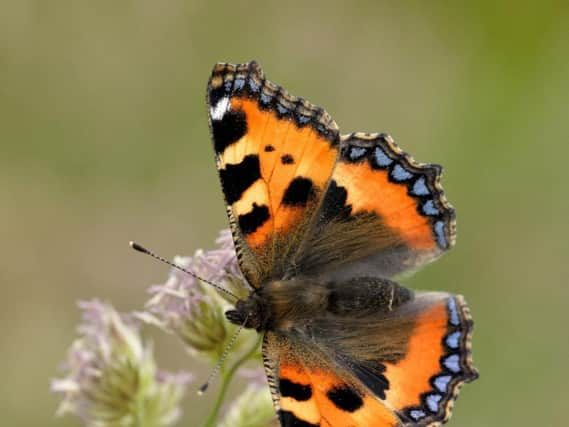UK butterfly populations plummet


The majority of species studied as part of the Big Butterfly Count saw their populations fall.
Shocked experts say they are puzzled over the causes as the country has had a largely favourable summer.
Advertisement
Hide AdAdvertisement
Hide AdA spokesman for the Big Butterfly Count spokesman said preliminary results suggest that UK butterflies may have suffered their worst year on record.
The Gatekeeper, Comma and Small Copper experienced their worst summers in the project's history and were down 40%, 46% and 30% respectively on last year.
The Small Tortoiseshell saw a 47% drop in numbers and Peacock slumped by 42% with both species recording their second worst years.
Numbers of the colourful Peacock have now dropped six-fold in three years from an average of 3.6 individuals per count in 2013 to just 0.5 in 2016.
Advertisement
Hide AdAdvertisement
Hide AdVolunteers carrying out the survey also saw the lowest number of butterflies per count since the scheme began with an average of just 12 butterflies spotted.
These figures were even lower than those experienced during the cold and wet summer of 2012 which was the worst year on record for UK butterflies.
Butterfly Conservation's Head of Recording, Richard Fox said it was too early to tell if this year is the worst on record although he said the count was usually a reliable indicator.
He said: "The drop in butterfly numbers this summer has been a shock and is a bit of a mystery.
Advertisement
Hide AdAdvertisement
Hide Ad"When we have cold, wet summers, as in 2012, we expect butterfly populations to plummet, but that wasn't the case this year.
"The summer months were warmer than usual, yet most Big Butterfly Count participants saw fewer butterflies.
"Perhaps the very mild winter had a negative effect, or the cold spring, or perhaps the impacts of intensive farming and pesticides are really hitting these common species now."
He added: "The longer it goes on the more we can learn about the causes that are driving the declines and in some cases, increases of our beautiful butterfly species."
Advertisement
Hide AdAdvertisement
Hide AdHowever, the red admiral bucked the trend and was up 70% compared to 2015 - its second highest figures since the count began.
The green-veined white was also up by 58% compared to last year and was the only one of the common white butterfly species to experience a substantial rise.
The most commonly seen species was the large white, up 2% from last year and topping the count for the first time.
More than 36,000 people took part in this year's Count, spotting around 390,000 butterflies during the three-week mid-summer recording period.
The Big Butterfly Count is sponsored by Waitrose and John Lewis.